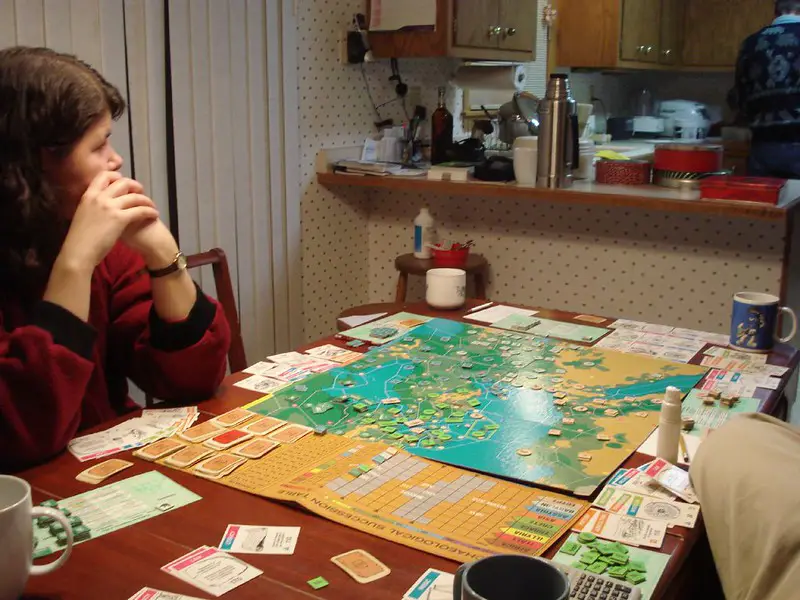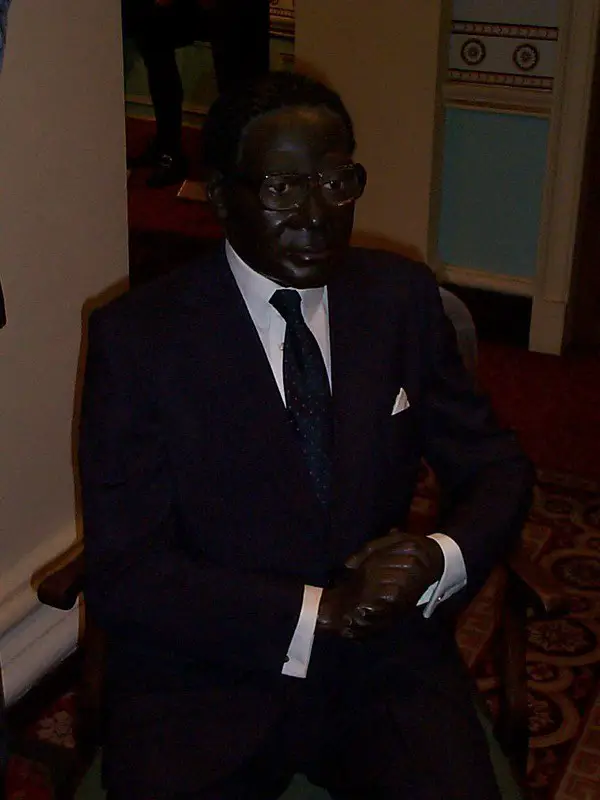If you were to describe human-beings, which words would you choose? Are we naturally unkind and revengeful? Are our instincts noble or are they egoistic and mean? All these might be true but the thing we have to know is the extreme complexity of human nature.
So, why do we have these problems and qualities? Whether they are healthy, awful, all the positively awkward features of human beings have been built through long years of evolution. Particularly, the main characteristics of the human being developed when our ancestors that once had lived in forests settled down in African savannah.
This summary sheds light on how one of the significant stages of world history had an enduring impact on biological, psychological, and social aspects. All these fields can explain to us the effectiveness of an evolutionary approach to understand the facet of modern culture, even if they are illogical.

Chapter 1 – Because of the situations on the savannah, our ancestors had to adopt a more social lifestyle.
Nearly seven million years ago, your ancestors looking like chimpanzees lived in the verdant rainforests of central Africa. Life wasn’t challenging in the forest which was rich in terms of the foods and safe from predators. Regrettably, that easy life didn’t last forever.
In the next million years, the rich environment of the lush rainforest would be destroyed by climate change and tectonic shifts. Their descendants would have to leave those fertile jungles and begin a difficult life in the savannah. Down there, they wouldn’t have much to eat and have to be more careful about hyenas and tigers.
The lives of our ancestors were difficult on the savannah. A species that want to survive have to develop all the necessary strategies.
Most probably, our ancestors were forced to leave the jungles for the savannah. Given the easiness of life among the trees, their life on the ground might have been notably more difficult. Before all, they had to travel farther areas to find proper food because the massive and plain grounds of the steppes didn’t provide them enough to eat. Also, the savannah was not safe from the predators.

The only way left to our ancestors was to adapt to these news conditions. This appeared as a must. For example, Australopithecus afarensis, a kind of chimpanzee that lived three million years ago, featured notably narrow hips to help two-footed walking and movable shoulders and wrists that help them to easily throw something. These subsequently developed qualities made their changes to survive higher by providing them with a quick move and the ability to throw stones- which were effective skills to get protected from predators.
Over time they discovered that when they threw stones together, it was more effective to get rid of predators. So, the ability to act collectively, the most noteworthy adaptation of our ancestors occurred. If you consider it, you’ll see that each survival action, like hunting or protecting from enemies, has more chances to be successful when we’re doing it collectively.
Group working isn’t the easiest thing in the world. We need to have certain intellectual abilities like communication skills, emotional intelligence, etc. to effectively coordinate. So, wanting to survive, early human beings needed to build a “social leap” by growing their brains wider and improving new social skills.
In the following pages, we’ll detailly examine the evolutionary growing process of our intellectual capacities.
Chapter 2 – Each successive generation made our intellectual capacities more multifaceted.
Given the fact that the average weight of an ape’s brain is 380 grams, can you guess how much does an average human brain weigh? 500 grams? 800 grams? No. If you weigh out the human brain on a scale, you’ll see it will be at least 1,350 grams. Remarkably different than the chimpanzee’s brain.
Thus, do you know what’s the reason for this absolute difference in brainpower? The evolution that had lasted for six million years. Chimps’ ancestors never left the forests, whereas human beings had to try to survive on the ground by developing new strategies.
Over time, we felt obligated to grow bigger brains and to sharpen our interpersonal skills due to environmental conditions. Thanks to those adopted abilities we could establish more sophisticated societies. As a result, these complex societies brought us even sturdier social skills.
Modern humans are called Homo Sapiens, which is specious of the ape. First Homo Sapiens were seen in Africa nearly 200.000 years ago. But, by following the line of earlier alike species, we can encounter our roots even much back. If we consider human history, we can realize the parallels between our triumph and intellectual abilities, as well as social synchronization.
Evaluate two previous human species, Australopithecus afarensis and Homo erectus which emerged respectively three million and two million years ago. Afarensis relatively succeeded to survive in Africa, whereas Homo erectus traveled to many further areas, that species could reach Europe and Asia.

So, what’s the difference? Homo Erectus had a two-times bigger brain than Afarensis did. Thanks to its mental benefits, Erectus could establish a more sophisticated social life. As archeological remains point out, Erectus organized a division of labor for better production and invented more useful tools that they used to realize their complex hunting plots. Today, we know that Erectus managed to hunt and break into pieces a whole elephant.
The main that allowed our ancestors to develop larger brains was their complex hunting skills. As they could manage to successfully hunt animals, they had enough nutrients to feed their brains. Bigger brains meant more useful tools and more competent teachers. When homo Erectus evolved into sapiens, human brains obtain an additional skill which was to understand the thoughts and experiences of others. This significant increase in the mental condition has been sometimes named as the theory of mind.
This new feature allowed homo sapiens to transmit sophisticated knowledge from generation to generation. So, our abilities and knowledge about surviving on the ground cumulatively increased over time. In the following chapter, we’ll discuss how this dynamic led the way to the next phase of human history, which was the agricultural revolution.
Chapter 3 – Transition into agriculture entailed hierarchy and inequality.
Imagine you live in 12,000 BCE, and your hunter-gatherer people should make a decision. You can maintain your nomadic habits, by continuously moving and feed yourself with whatever you can hunt. Or, you can choose a settled life in which you occupy yourself with agriculture.
It may seem easy to choose, but it isn’t. Of course, choosing an agrarian life by settling down promises a more stable life and allow you to keep more material goods. But, a farmer’s life demands more energy and patience in some respects. For example, you will have to bear your neighbors even if you hate them, and your diet will be formed with less various foods.
Furthermore, you should know that an agrarian lifestyle will cost your previous egalitarian life and you will live in a more competitive society.
Although the evolution of modern humans had occurred as hunter-gatherers, many strategies that they adopted on the way allowed them to grow as agriculturalists. Ability to use complex tools, advanced intellectual capacity, and the ability to manage the labor force were all essential assets for forming an agrarian society. But, these societies entailed plenty of radical transformations to human beings.

The increase in inequality in the material dimension was the most remarkable change. Hunter-gatherer societies couldn’t keep their surplus materials. So, even if they hunted or found a huge amount of something to eat, they had to equally distribute it among themselves. Unlike hunter-gatherers, agriculturalists could store their surplus foods for the following seasons. As a result, in agrarian communities, the ones working harder or having inherited wealth from their parents could become richer than their neighbors.
In sedentary communities, people developed the ideas of private property, and this allows some people to accumulate more prosperities that eventually made them more prestigious in terms of status. As a consequence of justifying this material inequality, the society built a hierarchical structure that allows some people to obtain certain privileged positions like the chief, king, or feudal lord.
This mentioned inequality confused gender relations too. While the relationships between women and men were relatively based on equality in the hunter-gatherer society, competitive agrarian people changed the nature of gender relations. Having essential biological triggers to take many assistants, men attempted to use wealth and power as a means of attracting women. On the other hand, the women sought to pair with the most wealthy and powerful men to guarantee stability, so they could raise their children.
As we’ll issue in the following pages, even this compulsory competition among the society can’t efface our communal character.
Chapter 4 – We still keep those social abilities that once helped us to survive.
Visualize yourself all naked and alone in the middle of the forest. Do you think you would be able to protect yourself from falling prey to a tiger or bear? How long would you survive in that situation? Most likely, you wouldn’t stay safe too long.
Now, keep imagining the same scenario with some subtle differences. You’re into woods, again all naked but this time 100 people are there with you, all of them are in the same situation. How long would you stay healthy right then?
Your chance to survive would be higher. After managing the first shock of the circumstances, you might organize and hunt that bear together. Human beings are so powerless when they are alone, but a community of people can establish a civilization. But for it, they have increased interpersonal skills and the ability to group work.
We, human beings, have a natural desire to establish interpersonal relationships because we are highly dependent on each other. Even since our early infantile, we try to communicate with others. Babies instinctively interrelate with others by making eye contact, copying the mimics, and making some noises. When we’re grown up, we hopelessly desire to share our concerns and ideas with our friends, as well as to understand what they feel and think.

So, for what reason, we have this instinct to share feelings? It was incredibly effective on the savannah. Think about it: Which way would e more useful if you tried to warn your people of a coming danger – to explain to them the existence of the danger, let’s say a predator, or make them feel your fear of it? Certainly, the latter. Your panic would encourage them to behave strategically.
In a similar vein, interpersonal connections allow human beings to set plans too. When your project – either hunting an animal or making an irrigation system- requires the supports of other people, it would be very functional to persuasively express the importance of your plan. So, over time humans became more inclined to appreciate the qualities like effective storytelling and confidence. Such qualities have served as powerful means for surviving.
Our desire for social interaction might cause a noteworthy consequence, that is our potential to falsify reality and exaggerate the situation. Consider it. If you want to warn your people of the arrival of a coming predator, it will be more effective to exaggerate its size and power. People will become quickly ready to act carefully for that “biggest and most fierce” tiger.
Chapter 5 – The greatest achievements of human beings are social innovations, not technology.
Nowadays, your daily routine probably starts with checking your emails on your phone. But this easy-looking action is dependent on numerous technological inventions, first the chips on the phone, and electricity that made wifi possible, and the satellites settling in orbit around Earth.
Humans are passionate about inventing something. That differs from other animals. But keep it in mind that humans couldn’t invent a rolling suitcase until 1970.
So, why did it take too long to design such a functional device for human beings that are keen on inventing? People didn’t need a technological device to carry their heavy baggage to the airport, because there was a social solution. They usually could get assistance by paying porters to carry their luggage.
It’s important to understand what distinguishes technical innovations from social ones. First, technical innovation is mostly about designing a tool that functions for a new purpose. In this regard, the first human who designed a spear by tying a rock and stick together was an inventor.

On the contrary, social innovation creates an influence on social relationships to solve an existing problem in society. For example, dividing labor to achieve efficiency is social innovation. Or think of the money. Ascribing a universal value for the papers including certain symbols and using them in trade is social innovation. Even the idea of waiting your turn in a queue is social innovation.
These are only some examples of significant social innovations that made society efficiently operate. However, we continuously innovate something new that solves a social problem. Searching for an answer to the obstacles we faced in our social connections is the supposed action of human beings. Remarkably, studies prove that the percentage of people that involve in technical innovation is only 5.
So, who are these small percentages of people? The social innovation hypothesis argues that technical solutions are usually initiated by a small portion of people who are technically tended but socially unenthusiastic. Remember the clichés about engineers; accordingly, they are passionate about tinkering but very bad at conversations.
So, we can argue that technical solutions are possible only if we fail on our social connections.
Chapter 6 – Social settings regulate whether we cooperate or dispute.
It’s April 1994, when Nelson Mandela becomes the president of South Africa, after all these political protests to get rid of apartheid. He exercises his authority to lead his people into peace and equality and leaves the presidency after one term.
It’s December 1987, when Robert Mugabe becomes the president of Zimbabwe. He also realizes critical reforms for his country. But, unlike Mandela, he establishes a corrupted system in which all the opponents are suppressed and he gets more and more powerful in decades.
People have the potential to accomplish noble deeds of altruism, as well as horrible acts of egocentrism. People adopted these two different tendencies overtime on the savannah, as survival tactics. Today, these two faces of humanity have a conflict within society. Fortunately, we have a certain outline to which one wins.
Generally speaking, people are successful in group working and cooperate with others. This becomes clearer when we make a comparison between humans and the chimpanzees, our close relatives. Studies about in-group-violence have suggested that chimps are 550 times more likely to cause a violation in a group than traditional hunter-gatherer humans. Because survival is much more possible when collective action is available.

In-group violence usually arises because of limited resources. For example, the Yanomamös, a hunter- horticultural community of Amazon, sometimes witness the actions of extreme violence over properties, women, and governance disputes. On the contrary, for Hadzas, a herder community that lives in Tanzania, violence isn’t a frequent option while they mostly enjoy common goods and services, also their women are free to choose their partners.
Besides all, the idea of a common threat is the most reliable tactic to establish in-group solidarity. The evolution of humanity explains that. When an external danger threatens your people, leaving your internal conflict aside and joining into a collective action is a matter of survival.
This motif remains the same in our world today, even in the complicated and multilayered international relationships. Internal politics of the United States is mostly formed by the perception of the presence or absence of a threat coming from outside. Think of the following days of the 9/11 attacks. President Bush who had been normally supported by a middle percentage of people before the attacks, suddenly received a 90 percent approval rating as Americans stuck together against the common enemy.
Chapter 7 – Evolution brought happiness as a means of survival.
Imagine that you won the lottery. Suddenly, you’ve been released from your previous stressful life, and you have a fortune that once you couldn’t imagine having. As a brand new millionaire, you’ll feel extremely pleased with this fortune.
Unfortunately, things don’t happen that easy. Interestingly, winning the lottery doesn’t necessarily make people happier. Winners certainly spend an attractive few weeks by spending enormously and experiencing luxury. However, studies suggest that these happy moments last only two years at most, after that the winners turn back to their standard level of happiness.
So, what’s the reason for this illogical situation? We can find the answer by looking at the history of humans, regarding their nature struggling to survive.
If we want to understand how a jackpot can’t provide lifelong contentment, first we should explain the existence of happiness. Humans, since the early appearance on earth, feel joy and happiness when they achieve something evolutionary advantageous. These are all the actions that help us to keep our existence on earth- like eating good meals, sleeping, and finding a suitable partner, and regenerating.

Nevertheless, positive outcomes of these achievements must stay with us only temporarily. Consider, if you were satisfied with successful hunting, you would never have enough courage to achieve something else again. Still, you would smile and stay tranquil, but you wouldn’t survive long or be able to pass your genes to the next generations. Whereas your fellow humans would keep searching for something new to hunt and flirting.
Still, humans keep contentment and motivation balanced in their minds. Research conducted at the University of Virginia examined the correlation between the level of happiness and income growth. Expectedly, people that remained at the same level of income appeared as the happiest ones. So, while things were going well, what’s the point of working so hard? On the contrary, people who have a moderate level of happiness achieved the biggest income growth. Because they weren’t satisfied with their current level and continuously aimed more.
Happiness functions in other parts of our lives too. As some researchers suggest, happiness helps us to stay healthy by boosting our immune system. Moreover, happy people are inclined to live longer. So, cheering up and stay positive might be as important as exercise and a good diet to have a long, healthy life.
Chapter 8 – Discover true happiness in light of our evolutionary essentials.
What does it take to make an animal happy? As a result of evolution, most critters become happiest when they extend their lifetime and reproduce themselves. In this regard, the way reaching satisfaction isn’t that difficult in the wild. You’ll be safe when you occupy with hunting, avoiding predators, and romancing.
It’s complicated when it comes to humans. We have countless options to choose from. After all, what we should do to survive- play tennis or do tai chi? What would be beneficial for attracting a partner – buying expensive clothes or having a stylish haircut?
It might be hard to choose. Particularly, when our modern world offers us too many ways to make us pleased temporarily but don’t provide us with long term happiness.
So, evolution offers us contentment when we stay in life and exercise our reproductive capacity. Does it suggest that everyone must have children as many as possible? Not forcefully. We see several unhappy families around. Furthermore, many happy couples have no children; including the old ones who happily lived since they became too old to have children.

Then, the secret of happiness for human beings isn’t the reproduction itself, instead, taking a role in that process makes us happy. In sum, the secrets of happiness are building a lifestyle and peculiar features that make you an ideal partner and fellow human.
What does it exactly mean? Firstly, it requires to stay fit. Because happiness is much reachable when you feel physically well. Have a balanced diet, do regular exercise, and sleep well. Also, have a dynamic social life. Our ancestors stay in life by acting collectively, so we’re destined to reach happiness in profound relationships, group work, and cooperation. Don’t keep yourself from society, spend plenty of time with people you value.
Finally, discover the thing that makes you feel special. Pursuing your passion for group work and finding a partner was possible by offering something valuable. This might appear as a particular ability, or knowledge, or support in hard times. Benefit from it by encouraging yourself to always obtain something or develop an asset.
Our modern society urges us to search for happiness in material things or symbols showing status. They’re also wonderful to have but living a meaningful life that corresponds to our social nature is more important to find happiness.
The Social Leap: The New Evolutionary Science of Who We Are, Where We Come From, and What Makes Us Happy by William Von Hippel Book Review
Although human beings are a particular type of animal, we’re still led by nature. Our customs intellectual dynamics and manners are profoundly formed by millions of years of the evolutionary process. Early humans were able to stay in life by developing sophisticated social abilities and embracing a cooperative lifestyle. Even today, the same essential instincts are inside humans. As a result, we should consider these social imperatives to understand the world and find long-term happiness.
Try Audible and Get Two Free Audiobooks
